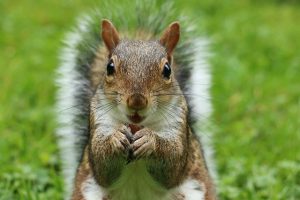
Do You Hear Animals in Your Attic? Call the Professionals.
Is it your imagination? Nope. You hear it again. Those sounds… you know there is an animal in your home attic. Well, an attic is a perfect place for animals to come in out of the weather, build a cozy nest, feed their young, and take a rest. Sounds nice for the animal, but not for the homeowner. So, are you asking yourself what kind of animal is in your attic?
Steps to Identify the Animals in your Attic
The first way to know what animal is in your attic is to silently stay up all night and see if you catch them. Seriously, that is easier said than done. So, here are a few of the indicators the friendly folks at World Class Wildlife Removal have put together for you.
What Noise are you hearing?

Sounds strange, but there are actually several different noise types you could be hearing in your attic. See if you have listened to one of the following.
- With daytime noise, the diagnosis is easy. Squirrels are the daytime pests that love our attics.
- If the sound is in the night, is slower, and heavy sounding, you probably have a raccoon in your attic. Raccoons are also chattery, making noises to one another. Rarely, it may be an opossum instead of a raccoon.
- When the sound is fast scurrying at night, you could be looking at rats or mice. And, if it is in the walls, that is rats or mice for sure. A flying squirrel will sound like rats and mice.
- Then, you may have bats or a family of birds in the attic if it sounds like chirping or fluttering sounds.
Once you have the sound narrowed down, you can move to the next clue about the animal in your attic.
The Point of Entry
Think where the animal could have gotten in and what the entry point looks like. Walk around the home’s exterior, looking all over to see if there is a breach in the house. Check the roofline, gutters, and vents.
Chewing marks around a two-inch hole may be the work of a squirrel. Smaller holes with grease marks and trails are the work of rodents like mice and rats. Additionally, a large hole torn into the roofing and siding is most likely a raccoon.
Tracks in the Dust
Further evidence may be in the trails they leave. As stated earlier, rats and mice leave a greasy rub mark from their fur wherever they go because they rub along walls and baseboards. Footprints in the attic dust indicate the animal’s size, which can further tell you what animal you are looking for. Also, raccoons leave prints that are larger and rather muddy sometimes.
The Fecal Matter Left Behind
No one likes this one, but it is a useful identifier and/or indicator of the pest’s size. You can always take a picture of the droppings in the attic and search the internet for images.
The Damage Done by Animals in Your Attic
The chewing is most obviously the work of rodents, whereas tearing is from a raccoon. The damage a raccoon makes is much more extensive. However, any type of animal in your attic will cause significant damage depending on the amount of time they are in there before caught.
So, be sure to call your local wildlife removal company to get the pesky wildlife out as soon as possible.
Get Rid of Animals in Your Attic
When faced with an unknown animal in the attic, most people don’t want to investigate. They just want it out! We understand, and that is why we are here for homeowners in Alabama. World Class Wildlife Removal is more than happy to identify the critters, safely and humanely remove them, and clean up after the damage they create.
Finally, if you see an awful heap of animal waste, that is the work of a raccoon. If you find piles of nuts and plant debris, call World Class to get the squirrels out for good. Should you hear critters in the walls at night or see a gray flash across your kitchen floor, you have mice or rats. Please don’t hesitate to call World Class Wildlife Removal to take care of the animal removal. The longer they stay in your attic, the more damage they create.
Contact World Class Wildlife Removal as soon as you hear a noise in the attic and for all your critter removal needs.
